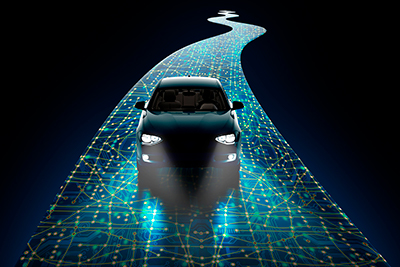
Imagine a world where you don’t spend hours of your day consumed with the commute from your suburban home into the city. What would you do with all the time you spend in traffic? Auto manufacturers want to make your dream a reality with self-driving cars. But will they ever be safe enough for the open road? Here’s how LiDAR is making self-driving cars safer.
What Makes a Car ‘Self-Driving’?
Marketing teams want car buyers to believe that self-driving cars have already arrived. With features like lane-keep assist, adaptive cruise control, and automatic braking, they are quickly classifying vehicles as ‘self-driving’. Although a vehicle that requires zero human interaction isn’t available yet, new self-driving tech is being researched and approved every day.
Challenges for the Self-Driving Car
Before self-driving cars can be released to the public, both governments and manufacturers need to be sure they’re safe. That requires the new automobiles to master two things. First, they need to be able to “see” everything humans can see. And second, they need to react properly in any given situation.
But even though vision technology has made major advancements in recent years, it hasn’t been easy to adapt this technology to the automobile. Traditional cameras are challenged by inclement conditions like rain, fog, snow, and other conditions that most vision systems have been shielded from throughout their evolution.
LiDAR Makes Self-Driving Cars Safer
Auto manufacturers are hoping that LiDAR is the key to unlock success for self-driving cars. Light detection and ranging technology (LiDAR), uses laser light to measure the distance to an object. With time-of-flight (ToF) pulsed LiDAR, self-driving cars can build a real-time, 3D map of their environment with a 200m radius at highway speeds, allowing the vehicle’s decision-making systems to react in half the time of the average human.
Affordable LiDAR sensors are making this new level of “sight” more accessible. Even the new iPhone 12 Pro models ship with LiDAR built-in. One major advantage of LiDAR over traditional vision cameras is that they work well in low-light conditions, perfect for driving in the dark. And only a few sensors are needed to make an effective embedded vision system for self-driving cars.
The data collected from LiDAR sensors can be used to prevent accidents and improve traffic flow. A LiDAR system can communicate in real-time with traffic systems, pedestrians, passengers, and other vehicles. Newer versions of LiDAR also eliminate some of the challenges, such as interference from other LiDAR sensors. Keep your eye on LiDAR’s development as it helps make self-driving cars safe.
Let the experts at Phase 1 show you how ToF/3D cameras can boost the effectiveness of your vision application.
